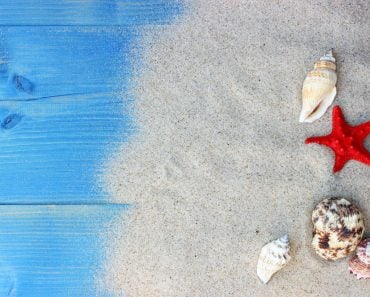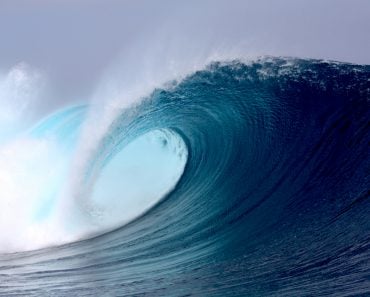Certain beaches squeak due to the abundance of uniform, rounded quartz grains that shear under compression to produce vibrations aka, sound.
Did you know that some beaches can actually “squeak”?
Yes, you read that right. If you stroll across the Kotobikihama beach of Japan or the ‘Singing Beach’ of Manchester, you can essentially hear the sand squeak beneath your feet, just like what you would hear while wiping a glass window!
But what makes these beaches sound like this? And why don’t all beaches sound the same?
Recommended Video for you:
Singing Beaches Around The World
Squeaking beaches are found in many places around the world, on every continent except Antarctica. The pearly white beach in Victoria, Australia has even earned the nickname “The Squeaky Beach” due to the high-pitched shrill that it produces.
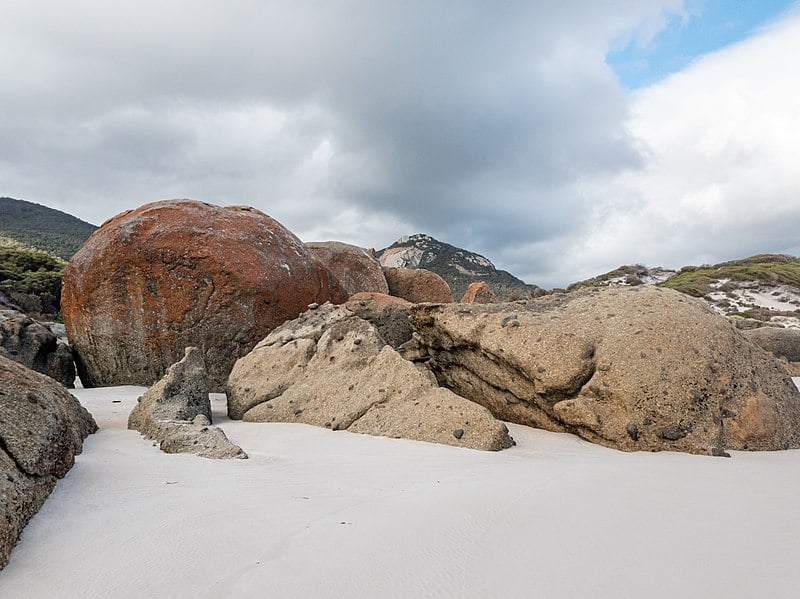
Singing sand has been spotted along the beaches of the Atlantic coast and the shores of Lake Superior and Lake Michigan of North America.
This phenomenon, however, doesn’t occur on all beaches because for the beaches to squeak, both the sand and the sea must meet certain conditions.
Musical Sand Vs Silent Sand
When we compare musical sand with ordinary sand, we can observe that, in most cases, the singing sand appears to be whiter and more lustrous as compared to their silent counterparts.
This is because singing sand is almost entirely composed of white quartz grains. Quartz is crystalline silicon dioxide, which is used widely for the manufacturing of glass. What makes quartz sand special is that it has a well-rounded, almost spherical, polished surface.
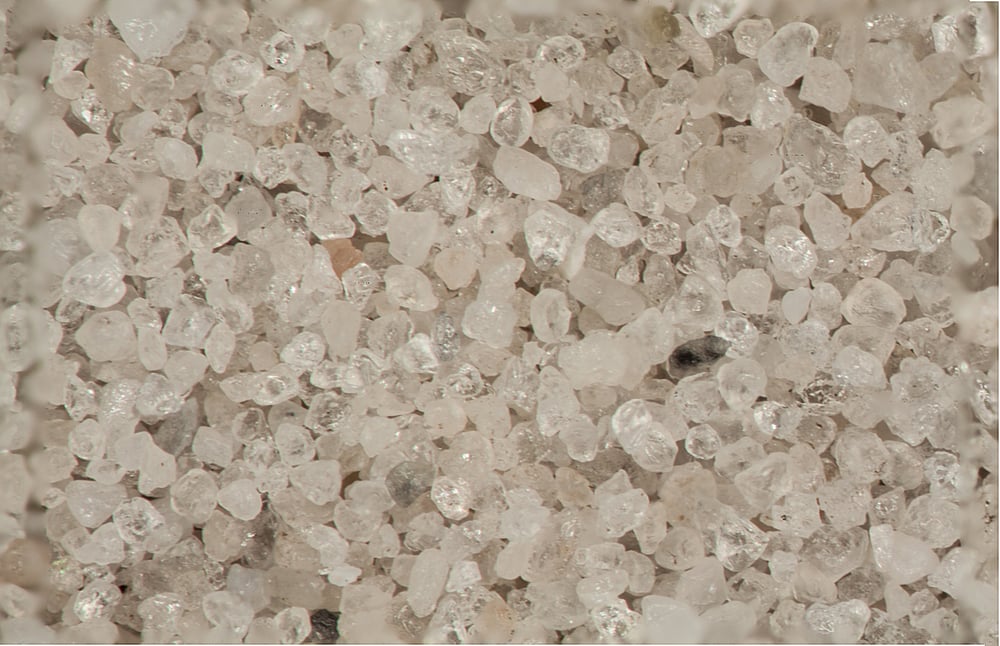
On the other hand, the sand present on regular beaches consist of a wide variety of rock grains, crushed shell particles, and organic matter. They are a mixture of grains with different sizes, shapes, and chemical compositions.
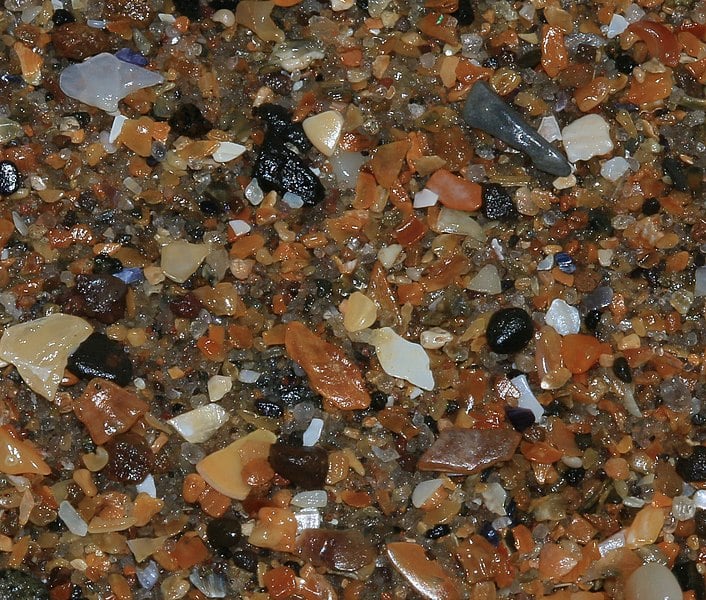
What Makes The Beaches Sing?
According to studies, to produce their characteristic sound, the sand grains must be uniform in size, well-sorted, well-rounded and polished. Moreover, the sand must be dry and free of impurities.
Certain beaches are simply lucky enough to have all these factors in their favor, but the presence of quartz sand is the major factor that makes a beach musical.
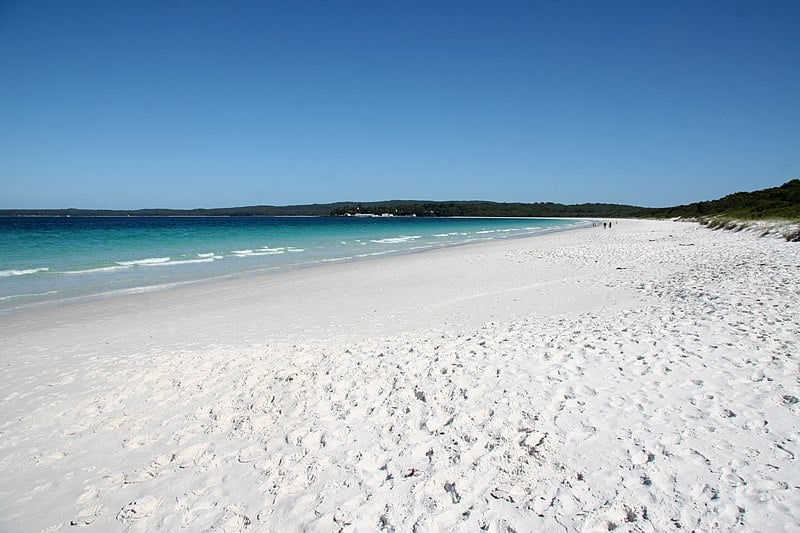
Moreover, high-energy beaches also have greater chances of being sonorous. The powerful waves filter and sort the sand particles well, thereby depositing evenly sized grains on the shore. The strong wave action also results in the abrasion of sand particles over time, thus smoothing their surface.
Additionally, in some cases, when the sand on the shore dries under the sun, the salt from the seawater can form a layer atop it, which enhances the evenness of its surface.
How Exactly Does The Sand On Singing Beaches Produce Sound?
Now that we know about the conditions required for the production of the sound, let’s see how these squeaks are generated.
The squeaking sound of sand is caused by friction between uniformly sized sand particles.
When you walk over the musical sand, the sand particles on the surface get displaced, and rub against the surrounding sand layer.
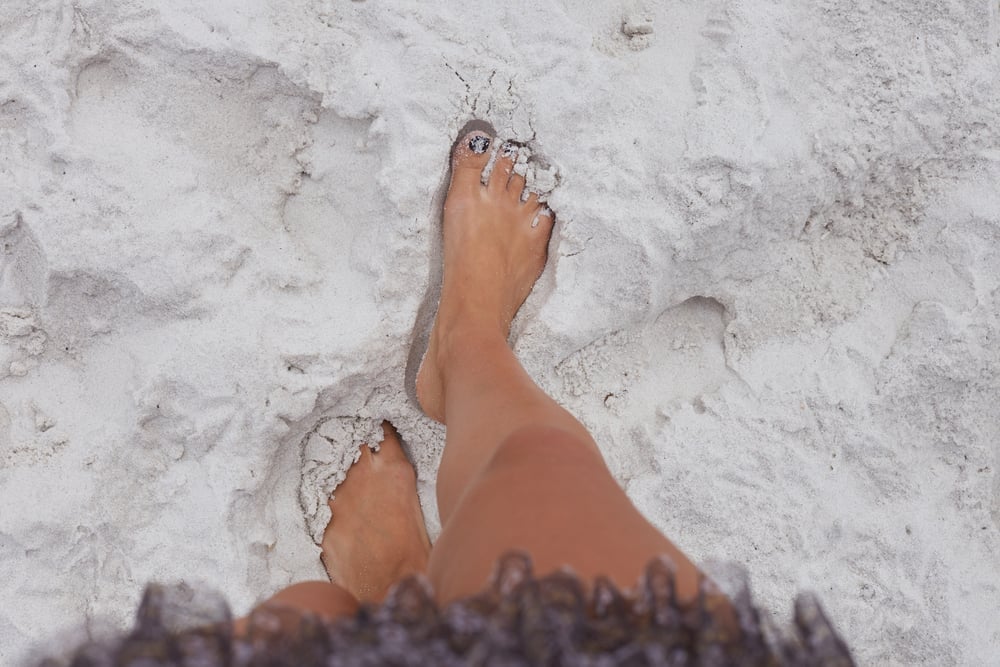
Singing sand resembles tiny glass beads. Due to their uniform size and even shape, the sand grains glide over each other in unison, like the slip faces of a dune. The frictional energy due to this shearing makes the sand grains vibrate. These vibrating sand grains transfer their energy to the air pockets between them, thus making the air vibrate. When these vibrations finally reach our ear, we hear them as a squeak, a whistle or a yelp.

You can try this out by taking identical glass beads and subjecting them to shearing force. The scouring of the beads produces a screeching sound. The same phenomenon happens with sand, just on a much smaller scale.
Depending on the grain size, the shearing strength, and the grain structure, the sound can vary from a light squeak to a high-pitched shrill.
Why Don’t Ordinary Beaches Squeak?
Due to their varying size and sharp, angular structure, the smooth sliding of particles does not happen with regular sand. When normal sand undergoes compression beneath our feet, the smaller particles fill in the gaps between the larger ones. Thus, instead of gliding past one another, they just cram together and form a compact, closely packed system. This is why we don’t hear ordinary beach sand squeak as we step across it.
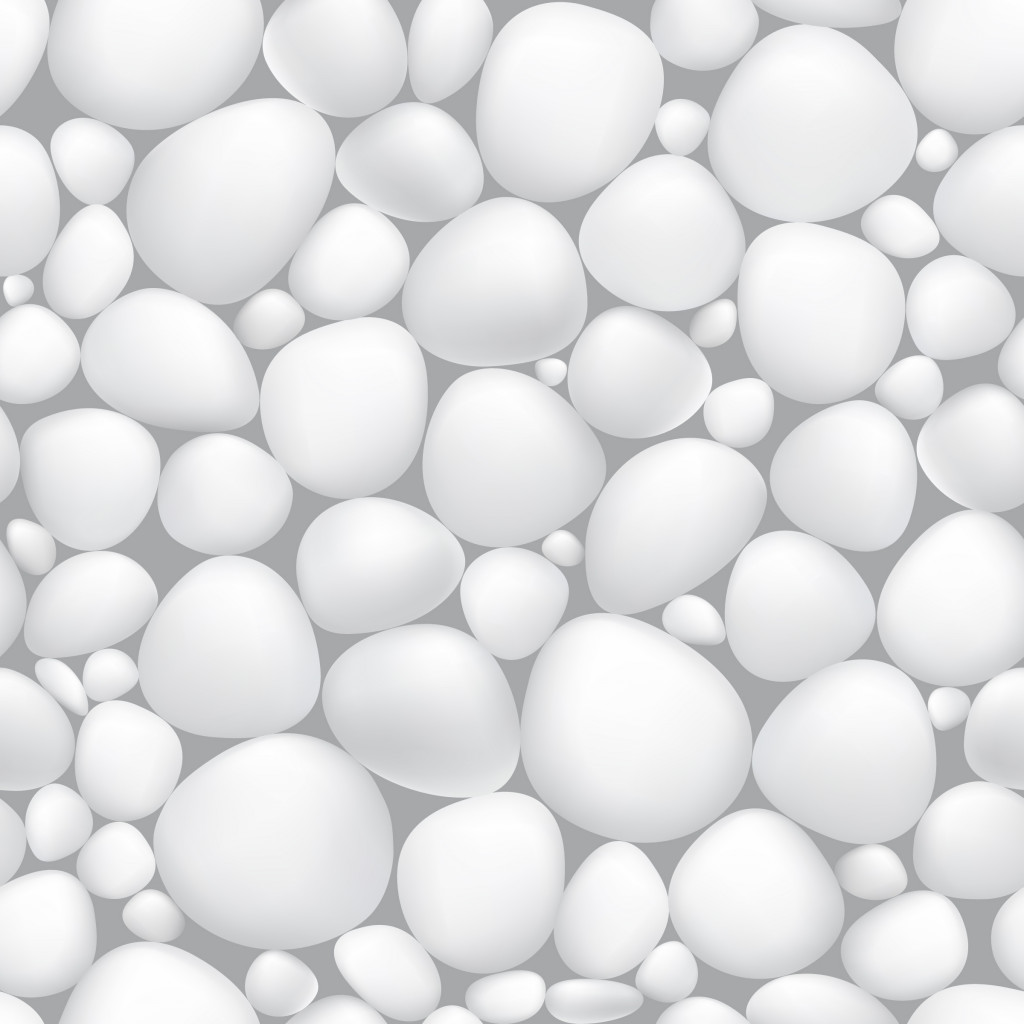
Similarly, wet sand also doesn’t produce much sound, since moisture inhibits the proper shearing of sand grains.
What Is Making The Singing Beaches Go Quiet?
There are many squeaking beaches spread across the world, but many of them are losing their ability to sing. The major culprit behind this is pollution and artificial construction.
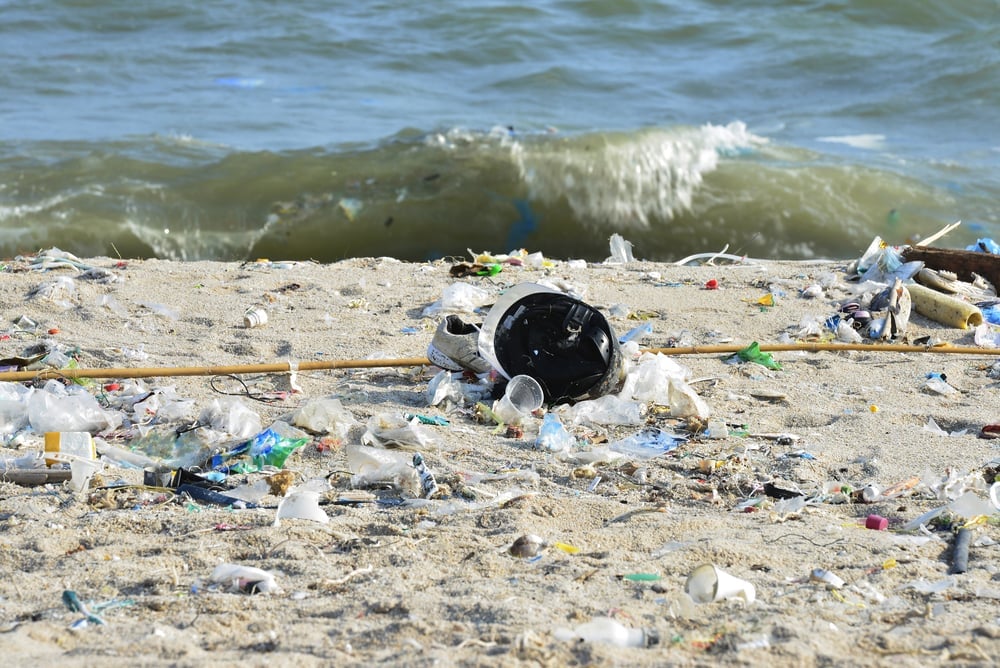
The pollution of shorelines and seawater increases the amount of foreign matter within the quartz sand. The accumulation of clay and oil also disrupts the shearing of sand grains.
Thus, an increase in impurities and the deformation of shorelines due to human activities have made this rare phenomenon disappear from many locations.
Reviving The Singing Sand
Recently, scientists have tried to figure out if the sonorous properties of sand can be revived by re-purifying them.
According to Japanese Physicist H. Takahara, the singing property can be revived through the following process; Firstly, rinse the sand thoroughly with water. Follow it with a wash using hydrochloric and then hydrofluoric acid. Boil it for several hours, dry it, and then voila, the sand is ready to sing once again!
Conclusion
The science behind singing sand and squeaky beaches is still an open subject. Further studies in granular physics would provide deeper insight into the acoustics behind the squeak, but for that, we need singing beaches to be sustained and safeguarded.
Reducing pollution and nurturing natural ecosystems seem to be much better options than subjecting countless tons of sand to a two-step acid wash, so let’s all do our part to protect this amusing work of nature for generations to come.
References (click to expand)
- Takahara, H. (1973, February). Sounding mechanism of singing sand. The Journal of the Acoustical Society of America. Acoustical Society of America (ASA).
- Information R. B. (1973). New Scientist:. Reed Business Information
- Journal of Sedimentary Petrology 1932-04: Vol 2 Iss 1 : Free Download, Borrow, and Streaming : Internet Archive - archive.org
- Beasley, A. W. (1972). Sands from Squeaky Beach and adjacent beaches on Wilson's Promontory, Victoria, Australia. Memoirs of the National Museum of Victoria. Museums Victoria.
- What is the singing sand?. nakisuna.jp


